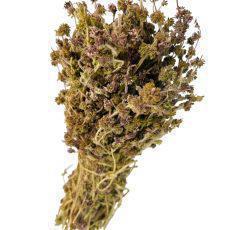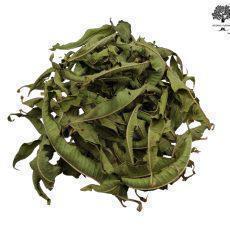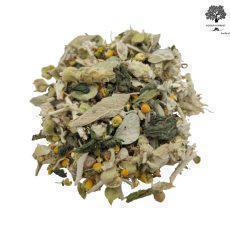Description
Name: Tilio
Scientific name: Tilia Cordata
Other name: Flamingo
Harvest : May 2023
Description
It is a well-known and common deciduous tree that thrives mainly in the temperate climate of the Northern Hemisphere, especially in Europe, North America and Asia. It is a tree with a straight trunk, a smooth dark cortex, heart-shaped leaves, and yellow-crested inflorescences that appear in the early months of summer.
Components
The flowers of the lime tree contain vegetal mucus, essential oil (farnesol) that offers the beautiful aroma, flavonoids (quercetin and camphorol), caffeic and other acids, a small amount of saponin, hesperidin, vanillin, tannin and gliss. Its bark contains polyphenols and coumarins.
History and tradition
linden is known since antiquity. In Greek mythology, a nymph named Filyra is mentioned, who, after being kidnapped by Saturn, gave birth to the Centaur Chiron. Filara, when bitterly asked the gods not to let her mortal, transformed her into a linden tree.
According to Dioskourides, the leaves were used as pads on snake bites. According to Pliny, snakes do not even approach the shade of this tree.
The tree of the lime tree is also reported by Theophrastus and Virgil. Later, in England and other European countries, wood carvings were made of lime tree.
In the 17th and 18th centuries, lime trees were planted in a specific way by delineating the boulevards, resulting in these avenues being the main feature of every park and city of central and northern Europe. In the 18th century, the French chemist Misha discovered that by grinding the fruit together with his flowers, he was taking a product that had a flavor similar to that of chocolate.
During the Second World War they used their dried and powdered leaves together with flour for bread making, which was an excellent nutritional supplement for that difficult period.
Therapeutic actions and uses
– is considered an antitussive, spasmolytic, sweating and sedative herb.
against headaches, panic, nervous tachypalmia and high blood pressure.
-the hot tea of the herb is a traditional remedy for cold, relief from coldness and generally for the problems of the respiratory tract.
– Promotes urination, catches convulsions and regulates breathing in cases of flu.
-supported stomach softener.
– relieves gynecological pains.
The inner bark of the tree is softening and cholerative.
has the reputation of preventing arteriosclerosis.
-a relaxing action combined with its general effect on the circulatory system, makes it useful in migraines.
– is considered an excellent sedative of the nervous system, even for newborn infants.
– Helps combat insomnia.
Its decoction is used in rheumatism and arthritis (it dissolves uric acid), but also in hydropics, cystitis, constipation, indigestion, intermittent fever, spleen and liver obstruction.
-for cardiac and digestive abnormalities accompanied by anxiety.
-for the urinary infections.
It strengthens our immune system and helps prevent heart disease, since it has a positive effect on cholesterol lowering and arterial relaxation.
– it has good results in those suffering from gout.
Other uses
– has bleaching properties on the skin. In other words, it acts against freckles, fads and generally skin stains, and is also suitable for bichromas.
– is formulated for spreading in areas with intense wrinkles as it acts as a softener.
-the hair tonic.
– In Cosmetics is used to treat wrinkles.
-Flame is still used for its wood, which is soft and easy to work on and honey produced by bees visiting its flowers.
-Another use of the tree, mainly in foreign countries, Europe and America, is its use as an architectural design tool. The lime trees are planted in a specific way by defining streets and boulevards.
-the American Indians made ropes and twigs from the long fibers of the bark of the linen, and from the wood they created household items and masks that wore ceremonies.
Preparation – Dosage
Pour 1 tsp of dry herb in 1 cup of boiling water and leave it for 10 minutes. Drink three times a day.
To get sweat in case of fever, use 2-3 tsp of the herb.








